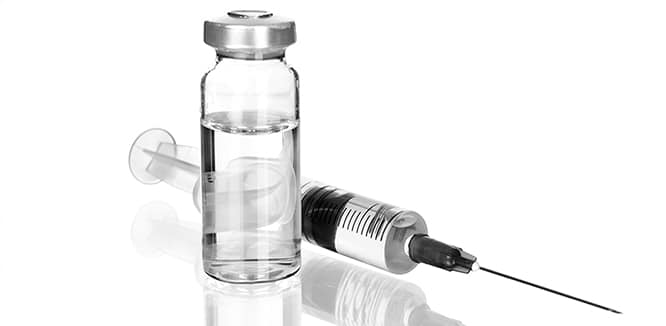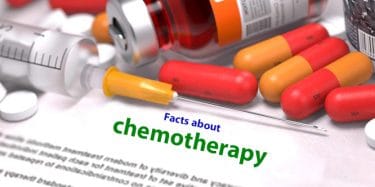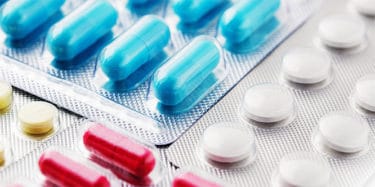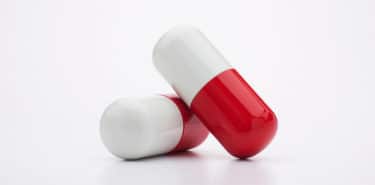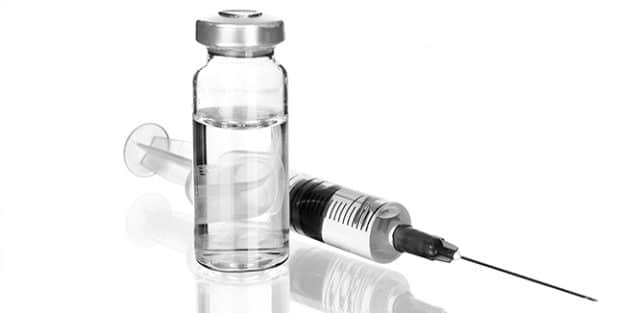
Table of Contents
What is heparin?
Heparin is a prescription anticoagulant medication used to prevent blood clot formation, and for the treatment of cardiac, pulmonary and circulatory disorders that carry the risk of clot formation. Naturally synthesized form in the liver and lung tissues is a mix of mucopolysaccharides (sugar molecule derivative).
Commercial heparin is mostly obtained from cow lungs or swine intestines. As it is poorly absorbed from the intestines, it should only be injected via intravenous or subcutaneous route, and should not be injected via intramuscular route.
What is heparin used for?
- For the treatment of vessels blocked due to clot such as venous thrombosis, pulmonary embolism, peripheral arterial embolism
- During heart operations, kidney dialysis, blood transfusion
- In patients who need to undergo certain operations or who need to be bedridden for a long period of time
- For the treatment of disseminated intravascular coagulation
- To prevent clotting in catheters which are kept in the vessels for a certain amount of time
- In pregnant women who experience problems during the early stages of pregnancy
- To create an anti-clotting surface inside the medical devices such as dialysis machines
- To prevent the blood samples in the test tubes from clotting
The mechanism of action of heparin
- It ensures the fluidity of blood by increasing anticoagulation protein levels in the blood, reduces the clotting ability of the blood, and prevents new clot formation by halting the enlargement of the existing clots
- It does not break down the existing blood clots, however, regulates the natural clotting mechanism
What is heparin test?
This test in which a blood sample taken from a vein in your arm is used measures the anti-Xa activity, thereby, assessing the levels of low molecular weight heparin (LMWH) and standard heparin (SH). Heparin molecules change in size and activity; SH consists of different sizes of heparin molecules, and LMWH consists of small heparin molecules.
What does heparin test do? When is it performed?
Coagulation tests performed during treatment help choose the proper dose of heparin. Conditions which may increase the risk of bleeding are checked before using heparin:
- Kidney-liver functions
- Platelet, hematocrit level
- Periodic fecal occult blood tests throughout the treatment
- Potassium level in all patients with the risk of hyperkalemia, and in all patients who received treatment for more than 7 days before the initiation of heparin
What is the normal heparin level?
Anti-Xa results should be interpreted based on the type and timing of the heparin used, and the underlying condition to be treated. Different laboratories may give different results for the same sample. Usually, if the concentrations of SH and LMWH are within the specified dose range, excessive bleeding is not observed.
If the patient does not use heparin, anti-Xa levels should be 0 or at undetectable levels. A high anti-Xa level means that the patient is receiving overdose, and the risk of bleeding presents; and a low level indicates the necessity of increasing the heparin dose.
Plasma heparin levels and aPTT (assessment of the clotting time) might be higher in older individuals despite comparable heparin doses. Elevated aPTT means late coagulation, and decreased aPTT means faster-than-normal clotting; normal range is 30 to 40 seconds.
What diseases is heparin used for?
Heparin is used for the treatment of following diseases:
- Coagulation disorders
- Blood clot in lungs
- Peripheral arterial obstruction
- Deep vein thrombosis
- Heart attach
- Acute cardiac syndrome
- Venous thrombosis
- Prophylaxis for pulmonary embolism
- Prophylaxis for atrial fibrillation and thromboembolic complications
- Disseminated intravascular coagulation
Heparin usage and dosage
Heparin is not effective when taken orally; it should be given via intermittent intravenous injection (into the vein), intravenous infusion or deep subcutaneous (under the skin) injection. Sometimes, it is administered 1 to 6 times a day; sometimes it is given as a slow, continuous injection into the vein. Intravenous form should only be used in the hospitals.
After the administration of the first subcutaneous injection in the hospital, training should be given on how to inject the medication to allow the patients administer the remaining doses at home. There are different administration protocols for the adjustment of the heparin dose. One of these is based on infusion dose, and the therapeutic aPTT level is 60 to 85 seconds; another one is based on body weight.
Heparin treatment and medications
Anticoagulant medications include standard (unfractionated) heparin (SH), low molecular weight heparin (LMWH), vitamin K antagonists (VKAs) and novel oral anticoagulants (NOAC). Commonly used anticoagulant treatment consists of a short intravenous (IV) heparin treatment for 5-7 days followed by oral anticoagulant treatment for 3-6 months.
In this approach, limiting the period of IV heparin treatment to 7 days reduces the risk of heparin-induced thrombocytopenia (HIT). This risk increases with the increasing treatment period; thereby, potassium levels should be assessed if the heparin treatment lasts more than a week. If the patient received heparin within the last 100 days, platelet count should be assessed before and 24 hours after the treatment.
Heparin medications
- Standard Heparin (SH): It is administered via intravenous or subcutaneous injection. It is generally administered as continuous IV infusion after one loading dose via intravenous route. The risk of bleeding increases when the total daily dose surpasses 35000 unit (IU). It is not recommended to use heparin in patients who have hypersensitivity to salt, in case of severe thrombocytopenia, and in case of uncontrollable active bleeding.
- Low Molecular Weight Heparin (LMWH): It provides a significant effect at a low dose thanks to its low molecular weight. When used via subcutaneous route, bioavailability is high; it can be used once or twice a day. Under usual conditions, it can be administered at a dose based on the body weight without laboratory monitorization. HIT is seen less with this heparin, and the risk of osteoporosis and bleeding is lower than SH with longer use.
- Vitamin K antagonists (VKA): VKAs can be added to treatment within the first 24 hours of treatment with SH or LMWH. The most commonly used VKA is warfarin. They must not be used during placenta as they can easily cross placenta. They are excreted to human milk in breastfeeding women, however, they do not pose a risk of bleeding.
- Novel Oral Anticoagulants (NOAC): SH and LMWHs may cause clot enlargement during treatment and clot formation recurrence after the treatment, and the risk of HIT is high. NOACs have advantages such as rapid-onset effect, not requiring laboratory monitorization, rarely causing bleeding, and having less interactions with food and medications. However, they also have disadvantages of losing effect after 1 or 2 missed doses, and problems with dose adjustment in cases of obesity, old age, kidney failure, cancer, etc.
Forms of heparin medications
Heparin is injected to upper arm or abdominal region via subcutaneous injection; and can be injected into the veins. There is no oral form of heparin, however, there are some blood thinning medications in tablet form.
- Injectable solution form free of preservatives: 1000 unit/mL, 10000 unit/mL
- Injectable solution form preserved using benzyl alcohol: 1000 unit/mL, 5000 unit/mL, 10000 unit/mL, 20000 unit/mL
- Heparin tubes: It is used to collect sample for biochemistry tests. In the bottom part of the tube, there is a gel separating plasma and blood cells, and there is also sodium heparin to prevent clotting reaction.
- Heparin gel: Topically-used spray or tube form containing heparin sodium as one of the active ingredients
Heparin dosage
Based on the form and the administration frequency of the medications; the dosage and administration should be individualized in line with age, severity of the underlying condition, and other comorbidities. The dose is usually initiated based on the ideal body weight, and the following doses are adjusted based on the body’s response. Studies in children are lacking, however, the dose is adjusted based on the body weight and medical history. The risk of bleeding is high in patients over the age 60, the starting dose should be low.
While the dose should be adjusted based on the results of the laboratory tests for each patient, the following dosage schedules can be used as guides:
- Deep subcutaneous injection; the first dose is 5000 unit via intravenous injection followed by 10000-20000 unit
- Intermittent intravenous injection; the first dose 10000 unit followed by 5000-10000 unit every 4-6 hours
- Continuous intravenous infusion; the first dose is 5000 unit via IV injection followed by 20000-40000 unit within 24 hours
Why is heparin injection necessary before and after an operation?
Operation is a risk factor for clot formation. Heparin is used to reduce the risk of clotting before and after the operation, and usually discontinued when the patient is discharged. The most commonly used dosage is 5000 unit via subcutaneous route 2 hours before the operation followed by 5000 unit every 8-12 hours for 7 days or until the patient is completely mobile. It is administered via deep subcutaneous injection into the arm or abdomen using a fine needle to minimize the tissue trauma.
Interactions between heparin and foods
Heparin may interact with certain foods, herbs and vitamins. If you are using heparin you should be careful when consuming the following foods and vitamins:
- Foods containing vitamin K: Broccoli, celery, cabbage, spinach, turnip, mint, chard, parsley, purslane, lettuce, roasted chickpea, liver, green tea, avocado, asparagus, cauliflower, cheese, peas, red meat, chicken, egg, milk, butter, carrot, corn, green bean, rice, tomato, potato, pepper, peanut, pumpkin, apple, orange, strawberry.
- Herbs containing coumarin: Dandelion, aniseed, licorice, chamomile, fenugreek, nettle, red pepper, Senna.
- Herbs with fibrinolytic properties: Onion, pineapple
- Herbal supplements such as vitamin A, common St. John’s wort, Ginkgo biloba, fish oil, etc.
- Herbs containing salicylate: Clove, Jerusalem artichoke, ginger, Ginseng, garlic, fennel
Bacteria in the yogurt increase the production of vitamin K, people using heparin should not consume yogurt at large amounts.
Warnings for individuals using heparin medications
Heparin may interact with other medications:
It may interact with aspirin, anti-inflammatory medications (NSAIDs) and other medications affecting the blood coagulation. Consult with your doctor before using any other medication.
Certain health problems may increase the risk of heparin-induced bleeding:
You must inform your doctor if you have one or more of the following disorders:
- Heart infection
- History of a major operation such as for eye or brain
- Unusual menstrual bleeding
- History of heparin-induced thrombocytopenia
- High blood pressure, diabetes
- Bleeding and coagulation problems such as hemophilia
- Active gastric, intestinal ulcer
- Kidney, liver disease
- Asthma or sensitivity to sulfide
It may cause a serious allergic reaction called anaphylaxis:
Inform your doctor at once if you are experiencing symptoms including death of the skin tissue at the injection site, shaking, fever, urticaria, itching, burning, shortness of breath, chest pain, and swelling of the face, lips, throat and tongue. Heparin may also cause reactions in individuals sensitive to meat products and swine protein.
It should be used with caution in pregnant and breastfeeding women:
As heparin does not cross placenta, it is preferred in pregnant women when anticoagulant treatment is necessary, however, some studies have demonstrated adverse effects in the infants of mothers who used heparin. Preservative-containing forms of heparin which normally does not cross placenta may cause nervous system deceleration, breathing difficulty and changes in blood chemistry in some infants.
It should be used with caution in elderly and children:
The risk of bleeding is especially higher in women above 60 years old. As it contains benzyl alcohol, it is not recommended to be used in newborns.
Heparin solution must be clear:
Do not use if the solution is cloudy or containing particles.
Use as recommended by your doctor:
Heparin is for short-term treatment, if you do not use it as recommended, it may pose serious risks. If you miss a dose; use it as soon as you remember, never use two doses together at the same time. In case of overdose, dangerous levels of medication which may cause severe bleeding may accumulate in your body.
Avoid extreme sports and activities with the possibility of injury when you are using heparin:
Be careful when using sharp objects such as razor and nail clipper, and when using toothbrush, dental floss or toothpick.
Limit your tobacco, alcohol and salt use:
Smoking reduces your plasma heparin level, alcohol increases the risk of bleeding. As heparin contains sodium, inform your doctor about conditions which may get worse with salt use such as congestive heart failure.
Side effects of the heparin medications
- Heparin-induced thrombocytopenia (HIT)
- Sudden numbness, weakness especially in one side of the body
- Pain and swelling in joints
- Severe back, stomach, head ache
- Unusual bleeding in gingiva and nose
- Excessive menstrual bleeding
- Irritation, pain or wound at the injection site
- Quick bruising
- Increased liver enzymes
- Vomiting blood or in shapes of coffee beans.
- Spitting blood
- Fatigue, excessive sweating
- Severe allergic reactions (chest pain, shaking, fever, irregular breathing, shortness of breath, swelling of the eyes)
- Numbness, tingling, itching and burning of hands and feet
- Sudden loss of balance and coordination, speaking difficulty, dizziness
- Blood in the urine
- Black, tarry, blood stool or constipation
These side effects are not always observed, and even if observed, they mostly resolve within a few days or weeks. However, if they become severe, you should seek medical help.
References: 1- Heparin Injection, 2- Information on Heparin, 3- Heparin Importation

